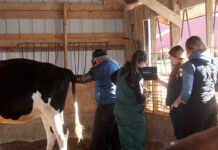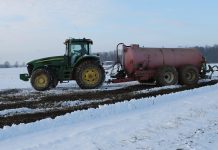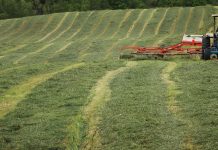If your family is like mine, watching Christmas Vacation — at least once — is an annual occurrence this time of year. The main character, Clark Griswold (Chevy Chase), is determined to show his family a fun, old-fashioned Christmas. Things quickly become chaotic.
From the fiasco of searching for the perfect Christmas tree, to Cousin Eddie and the rest of Clark’s family coming to stay for Christmas, to receiving a Jelly of the Month Club membership instead of cash as his annual bonus, Clark finally understands the true meaning of the season — it’s about the people in your life, even if they frustrate you.
Managing a successful dairy farm requires communicating and working with a diverse group of people. Like Clark Griswold, these people may sometimes frustrate you, but they are there to help answer your questions, provide direction and support and help you accomplish your goals. If you are successful, these same people are successful — it’s a win-win for everyone.
As the year draws to a close, take a moment to reflect on the folks who provide advice, direction, guidance and support to you, your family, and farm business.
While not an exhaustive list, here are a few examples: family, who provides labor, opinions and support; employees, who complete daily tasks necessary to keep your business operational; the lender, who provides essential operating capital; the agronomist, who assists with nutrient recommendations; the accountant, who helps manage the ever-changing tax laws; the nutritionist, who develops rations that allow cows to provide maximum milk production; the attorney, who reviews and negotiates leases, agreements and directs transition plans; the extension educator, who provides current, unbiased research to help you make informed decisions; the veterinarian, who provides services to keep your animals healthy and productive; the financial planner who helps you plan for retirement and transition your business; and NRCS/SWCD personnel, who provide technical assistance for nutrient management and water quality issues.
Vision statement
In addition to the services your advisors provide, they can be called upon to help you develop a vision statement for your farm. A vision statement is a brief description of what the management team wants the farm to look like in the future and should help motivate management, employees and advisors to meet farm goals.
According to Purdue University Extension Specialists, a vision statement includes three important elements: a core ideology, an envisioned future and recognition of service to stakeholders. The core ideology reflects the “reason for being.” The envisioned future describes what the farm will look like if it achieves its most important goals. The final part of the vision statement recognizes how the farm business serves its stakeholders, including family, employees, advisors and the local community.
Sample vision statement
If you’ve never seen or developed a vision statement, it may be helpful to see an example. The example below is from a 250-head dairy farm that also raises corn, soybeans, silage and hay.
“MBC Farms will be an agribusiness focused on the profitable, progressive and sustainable production of premium quality, identity-preserved grains, oilseeds and dairy products. MBC Farms will be a respected, responsible neighbor and an asset to our community. We prefer a rural lifestyle and are willing to embrace change as a means to that end. MBC Farms will provide the opportunity for our children and employees to participate in production agriculture either as owners and/or managers of the business.”
The statement developed by MBC Farms highlights what they value, including being profitable, sustainable, respected in their community and providing opportunities for their children. A well-developed vision statement can be useful when unexpected issues or opportunities arise. The vision statement can also provide a foundation in the process of developing goals for the business.
Writing a vision statement
A vision statement is a description of what your farm will look like in the future. It is not a dream, but rather, a commitment. The vision provides the basis for managing the tasks necessary to achieve goals. In addition to providing direction, the statement helps develop management strategy, identify opportunities and make business decisions.
As you begin writing your vision statement, consider these questions presented in the Purdue University Extension bulletin, Developing Vision and Mission Statements: 1. In 10 years, our business will be? 2. We will be recognized by our ability to? 3. We are pursuing these activities because?
Summary
Like Clark Griswold, I hope you realize that perfection is not the goal. Rather, recognizing that people are essential to your long-term success should be the focus. I encourage you to work closely with your family and advisors as you develop a vision statement for your farm business.













